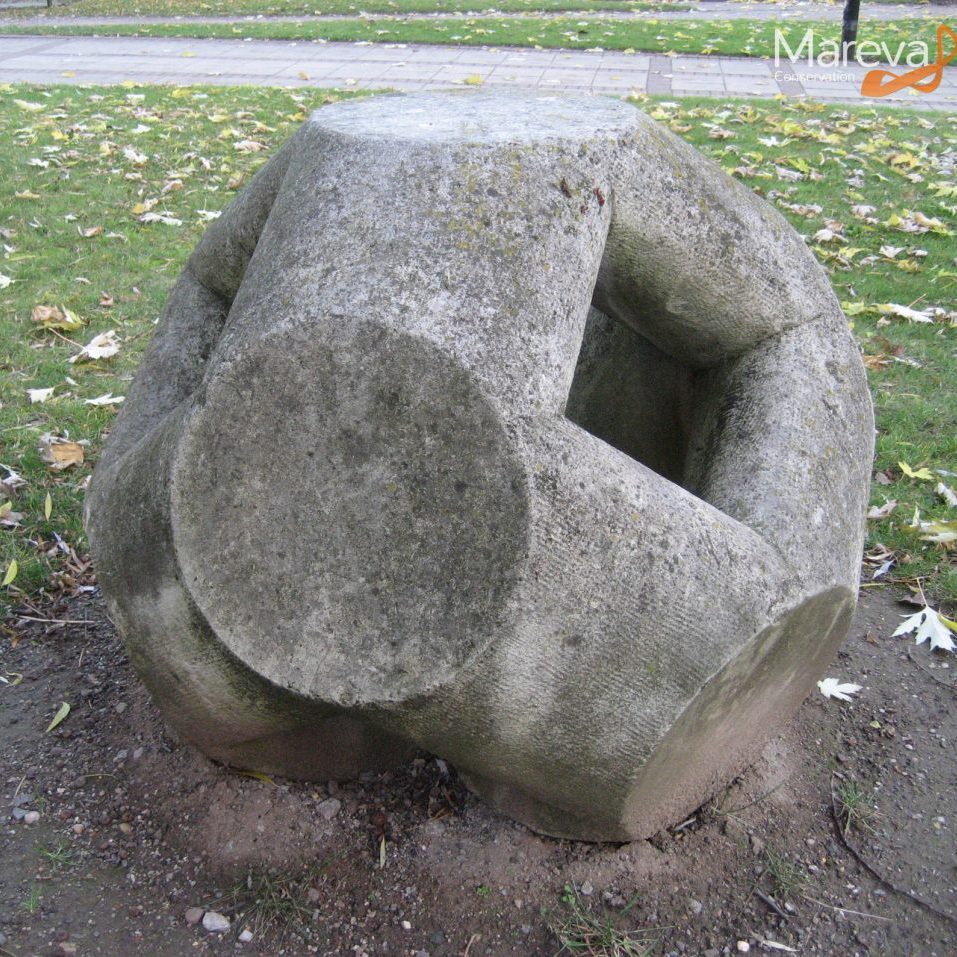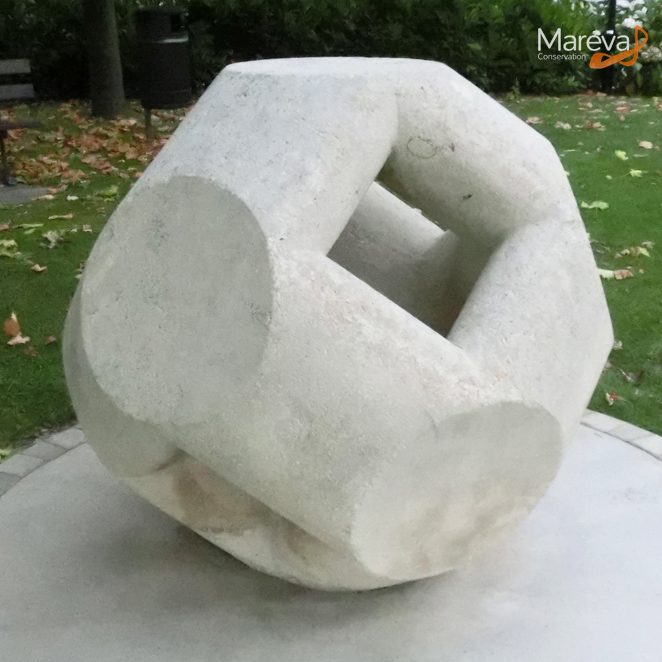John Maine Sculpture No 1
Contemporary limestone geometrical sculpture by John Maine, 1970; Aston University, Birmingham
The sculpture was so heavily soiled that it was believed to be made of concrete rather than limestone. Also, the sculpture required relocation. Therefore, the treatment was undertaken in two phases:
Re-location
The sculptures was assessed prior to re-location. After the base of the sculpture was excavated by removing the earth surrounding it, it became apparent that the sculpture had been set into a cement /concrete base. Recommendations were made to remove the base as it could cause degradation of the limestone above the top side of the cement base. After the base was fully excavated, loose earth deposits were removed from around the lowest part of the sculpture revealing the exact shape of the base. Carving chisels and a mullet were used to remove the upper part of the concrete base as it was vital not to damage the limestone. When the concrete was removed from around the limestone, it was possible to remove the remaining concrete base with a drilling machine. Some of the base around the centre and around the iron rod were left in place as it would help to fix the sculpture securely to a new base platform after re-location. After that the sculpture was moved to its new location and set into its new platform base. The conservation team made sure that the sculpture was positioned perfectly and that it was level & balanced before it was firmly fixed into its new platform base.
Cleaning
Loose soiling was removed from the surface with stiff brushes. Moss was removed from the sculpture using wooden spatulas and soft plastic tools. The surface was then brushed to remove any remaining soiling. The bulk of the colonies of lichen growth were removed physically with soft plastic spatulas. Biocide formulated for limestone was sprayed onto the surface in order to eradicate the bio growth (algae, lichen etc.) that was covering the sculpture. Superheated stone steam cleaning system was used to remove ingrained surface soiling. The hot steam allowed the pressure to be minimised while still removing the soiling successfully, thus, the limestone surface was not exposed to any undue pressure. Areas containing a black pollution layer (that has formed on the sculpture over the past four decades) were treated with a conservation laser system. A wavelength of 1064 nm was used to remove the black layer. Fence panels covered with blocking sheets were installed around full parameter of the sculpture prior to using the laser system and a protective clothing including goggles for 1064 nm wavelength were worn during the treatment.
Client
Aston University, Birmingham


